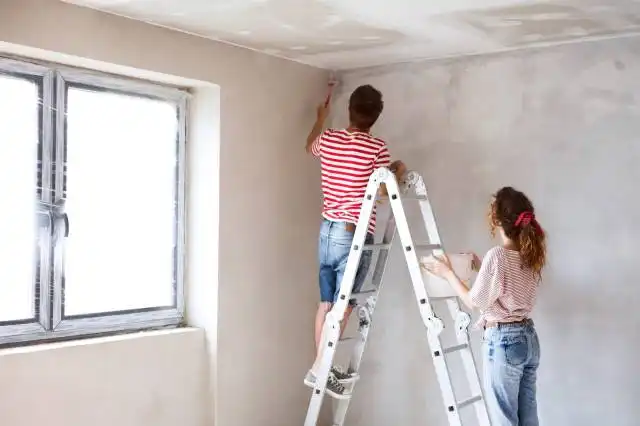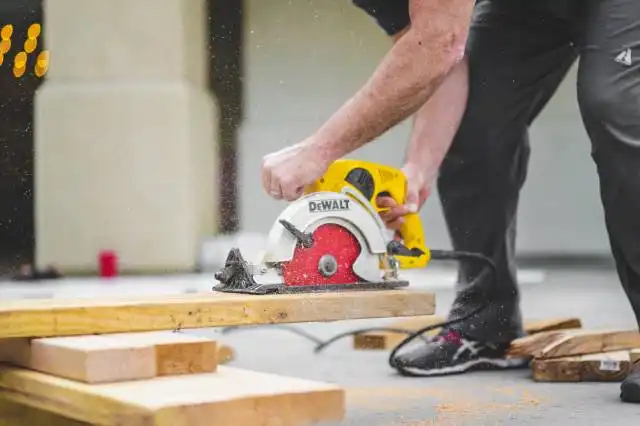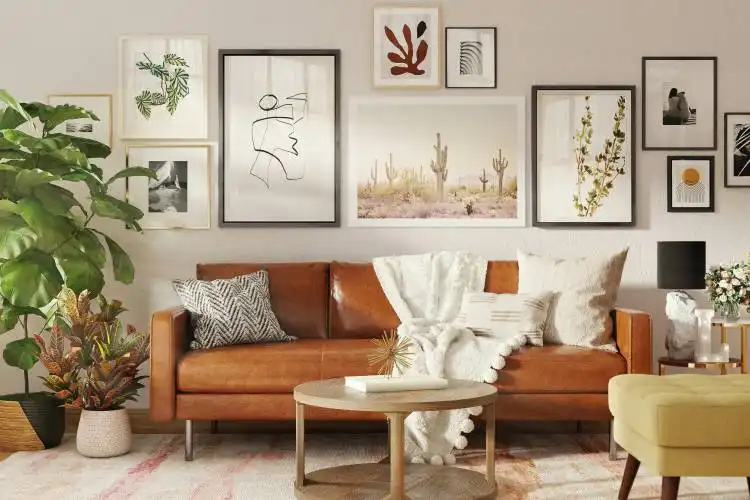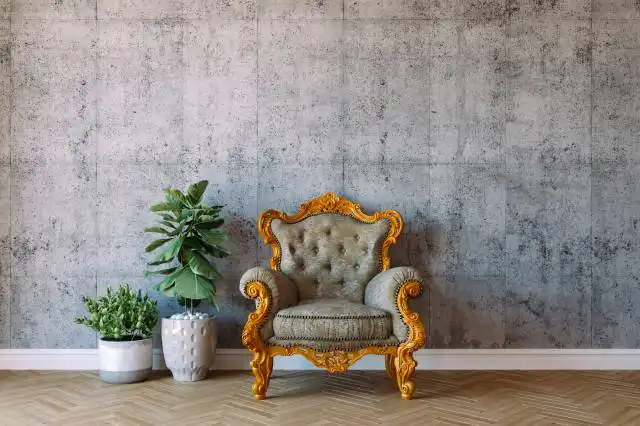Start an Interior Design Business
Unleashing Your Creativity: Step into the Eclectic World of Interior Design
| Updated


INTERIOR DESIGN BUSINESS
Dive headfirst into the world of colors, fabrics, and furniture by starting your own Interior Design business, a playground for your creative spirit. This venture is all about beautifying your clients' living or working spaces, giving them a taste of luxury or simplicity - whatever their heart desires. As an interior designer, you'll wear many hats: you'll be an artist, a project manager, and most importantly, a magician, transforming ordinary spaces into breathtaking ones. Au revoir, bland rooms; hello, extraordinary interiors!
Jump to Business Plan
RELATED BUSINESS IDEAS
Browse ALL Home Improvement & Repair Solutions Business Ideas
Discover Your Perfect Domain
Unlock the door to your online success with our hand-picked selection of premium domain names. Whether you're starting a new venture or rebranding an existing one, the right domain can set the tone for your digital presence. Browse through our curated list, each with its unique potential to enhance your brand's visibility and credibility.
INTERIOR DESIGN MINI BUSINESS PLAN
This a quick reality check to help you identify the strengths and weaknesses of your business concept before you dive in.
Business Idea: Interior Design Business
Expected Percent Margins:
- Gross Margin: 30-50%
- Net Profit Margin: 10-15%
Earnings Expectations:
- Daily Earnings: $100 - $300
- Weekly Earnings: $500 - $1,500
- Monthly Earnings: $2,000 - $6,000
- Annual Earnings: $24,000 - $72,000
Actions to Hit Those Numbers:
Skills Development:
- Certification: Establish credibility through interior design courses, certification, or degree.
Marketing and Client Acquisition:
- Portfolio Building: Create a visually appealing, diverse portfolio demonstrating your style and range.
- Networking: Connect with local real estate agents, architects, and contractors to widen your reach.
- Social Media & Website: Use platforms like Instagram or Pinterest and maintain a professional website.
Client Relations and Experience:
- Communication Skills: Excellent communication skills will ensure you understand client's requirements and expectations.
- Project Management: Efficiently manage multiple projects to meet deadlines and budget requirements.
Cost Control:
- Bulk Purchases: Where feasible, make bulk purchases of frequently used materials to secure discounts.
- Contractor Relations: Establish reliable connections with contractors for better rates and service.
Business Operations:
- Working Hours: Be ready to accommodate unconventional working hours based on client's needs.
- Pricing Model: Determine if you'll charge per hour, per square foot, or a flat fee per project.
Again, these numbers could vary based on factors such as geographical area, the specific niche you're targeting, your level of expertise, and the prevailing economic conditions. Always seek personalized advice from a financial advisor or mentor in the interior design industry.
NOT WHAT YOU HAD IN MIND? Here are more ideas



Browse ALL Home Improvement & Repair Solutions Business Ideas
Grab Your Business Website Name
Before you get caught up in the whirlwind of setting up your business, invest in a domain name. It's a small but significant step that lays the foundation for your brand and makes it easier for customers to find and trust you. Just like you wouldn't build a house without securing the land first, don't build a business without securing your domain name.
"Why? Can't that wait?" Here's why it shouldn't
Step 1: Determine if Starting an Interior Design Business is Right for You
Breakdown of Startup Expenses
Before starting an interior design business, it is important to understand the startup expenses. These can include costs for office space, furniture, supplies, software, and marketing materials. Additionally, you may need to pay for professional services such as legal advice, accounting, and insurance. It is important to research these costs and create a budget for your business.
Breakdown of Ongoing Expenses
After the initial startup costs, there are ongoing expenses to consider. These can include costs for rent, utilities, employee salaries, and marketing. Additionally, you may need to pay for professional services such as legal advice, accounting, and insurance. It is important to research these costs and create a budget for your business.
Examples of Ways to Make Money
There are many ways to make money in an interior design business. These can include charging for services such as consultations, design services, and installation services. Additionally, you can make money by selling furniture, accessories, and other products. You may also be able to make money by offering classes or workshops. It is important to research these options and determine which ones are best for your business.
Step 2: Name the Business
Naming a business is an important step in the process of starting an interior design business. It is important to choose a name that accurately reflects the services that the business will provide, as well as one that is memorable and easy to pronounce. Additionally, it is important to make sure that the name is not already taken by another business. To ensure that the name is not already taken, it is important to conduct a search of the US Patent and Trademark Office database. This will help to ensure that the name is not already in use by another business.
In addition to conducting a search of the US Patent and Trademark Office database, it is important to consider the use of keywords in the business name. This will help to ensure that the business is easily found when potential customers are searching for interior design services online. Additionally, it is important to consider the use of a domain name that is similar to the business name. This will help to ensure that potential customers can easily find the business online.
When selecting a name for the business, it is important to consider the use of a logo. A logo will help to create a recognizable brand for the business and will help to make the business stand out from the competition. Additionally, it is important to consider the use of a tagline. A tagline can help to further define the services that the business offers and can help to create a memorable brand.
Finally, it is important to consider the use of social media when selecting a name for the business. This will help to ensure that the business is easily found online and that potential customers can easily connect with the business on social media. Additionally, it is important to consider the use of a hashtag that is related to the business name. This will help to ensure that the business is easily found when potential customers are searching for interior design services online.
Step 3: Create a Business Plan
Creating a comprehensive business plan is essential to the success of any business. A business plan should include a description of the business, a market analysis, a competitive analysis, a description of the products or services offered, a marketing plan, an operational plan, a management plan, and a financial plan.
The description of the business should include the mission statement, the type of business, the location, and the legal structure of the business. The market analysis should include information about the target market, the size of the market, the trends in the industry, and the potential customers. The competitive analysis should include information about the competitors, their strengths and weaknesses, and the competitive advantage of the business.
The description of the products or services offered should include the features, the benefits, and the pricing. The marketing plan should include information about the target market, the marketing strategies, and the promotional activities. The operational plan should include information about the day-to-day operations of the business, such as the processes, the staff, and the resources needed.
The management plan should include information about the roles and responsibilities of the management team, the organizational structure, and the decision-making process. The financial plan should include information about the startup costs, the ongoing expenses, and the projected income.
Step 4: Obtain Licenses and Permits
When starting an interior design business, it is important to obtain the necessary licenses and permits. Depending on the state and local regulations, there may be different types of licenses and permits needed. For example, in some states, a business license is required for any type of business. Additionally, there may be a specific license for interior design businesses. It is important to check with the local government to determine what types of licenses and permits are needed.
In addition to the general business license, there may be other permits needed. For example, if the business will be selling products, a sales tax permit may be required. If the business will be hiring employees, there may be additional permits that need to be obtained. Additionally, if the business will be using hazardous materials, there may be additional permits required. It is important to check with the local government to determine what types of licenses and permits are needed.
Cost of Licenses and Permits
The cost of licenses and permits will vary depending on the state and local regulations. Generally, the cost of a business license is relatively low. However, depending on the type of business, there may be additional fees associated with the license. Additionally, there may be a fee for any additional permits that are needed. It is important to check with the local government to determine the cost of the licenses and permits that are needed.
In addition to the cost of the licenses and permits, there may be additional costs associated with obtaining the licenses and permits. For example, there may be a fee for filing the paperwork or for obtaining the necessary documents. Additionally, there may be a fee for any inspections that are required. It is important to check with the local government to determine the total cost of obtaining the licenses and permits.
How to Obtain Licenses and Permits
Obtaining the necessary licenses and permits for an interior design business can be a complicated process. Generally, the process will involve filling out paperwork and submitting it to the local government. Additionally, there may be inspections that are required before the licenses and permits can be issued. It is important to check with the local government to determine the exact process for obtaining the licenses and permits.
In addition to the paperwork, there may be other requirements that need to be met before the licenses and permits can be issued. For example, there may be a minimum amount of insurance that needs to be obtained before the licenses and permits can be issued. Additionally, there may be a minimum amount of capital that needs to be invested in the business before the licenses and permits can be issued. It is important to check with the local government to determine the exact requirements for obtaining the licenses and permits.
Step 5: Set Up a Business Bank Account
Choosing the right bank for your business is an important decision. You should look for a bank that offers the services you need, such as online banking, merchant services, and a business credit card. Additionally, you should look for a bank that offers competitive interest rates and fees. Consider banks that have a local presence, as this can make it easier to receive support and advice when needed.
Opening a Business Bank Account
Once you’ve chosen a bank, you’ll need to open a business bank account. This will allow you to keep your business finances separate from your personal finances. You’ll need to provide the bank with your business name, address, and contact information. You may also need to provide proof of your business’s legal status, such as a copy of your business license. Additionally, you may need to provide proof of your identity, such as a copy of your driver’s license.
Benefits of a Business Bank Account
Having a business bank account can help you to keep your business finances organized and secure. It can also help you to track your business’s income and expenses. Additionally, having a business bank account can help you to establish business credit, which can be beneficial when applying for a loan or line of credit.
Setting Up Online Banking
Once you’ve opened a business bank account, you should set up online banking. This will allow you to access your account from anywhere and manage your finances more easily. You’ll need to provide the bank with your contact information and create a username and password. Additionally, you may need to set up two-factor authentication, which will provide an extra layer of security for your account.
Step 6: Market Your Business
Marketing your business is a crucial step in the process of starting an interior design business. There are a variety of marketing strategies you can use to get the word out about your business. Examples of marketing strategies include creating a website, creating a social media presence, and advertising in local newspapers. Additionally, you can create a portfolio of your work and distribute it to potential clients. You can also join local interior design associations and attend trade shows to network with other professionals in the industry.
Develop a Brand
Developing a brand is an important part of marketing your business. Your brand should be unique and reflect the style of your business. You should create a logo and use it on all of your marketing materials. Additionally, you should create a tagline that will help people remember your business. You should also create a website that showcases your portfolio and the services you offer. Finally, you should create a blog to share your interior design tips and advice with potential customers.
Step 7: Set Up a Website
Creating a professional website is an important step in starting an interior design business. It is the first impression potential clients will have of your business and should reflect the quality of your work. Here are some tips for creating a professional website:
- Choose a domain name that is easy to remember and reflects the name of your business.
- Use high-quality images that showcase your work and the services you offer.
- Include a portfolio of your past projects and a list of services you provide.
- Make sure the website is optimized for mobile devices, as many people use their phones to search for businesses.
- Include contact information, such as your phone number and email address, so potential clients can easily reach out to you.
- Make sure the website is easy to navigate and includes a search bar so visitors can quickly find what they are looking for.
- Include customer reviews and testimonials to build trust with potential clients.
- Make sure the website is secure and includes an SSL certificate.
- Include a blog to share interior design tips and advice. This will help you establish yourself as an expert in the field and will help attract more visitors to your website.
Step 8: Network and Build Relationships
Networking is an important part of any business, and interior design is no exception. There are a number of ways to network and build relationships in the interior design industry. One way is to attend trade shows and conferences. These events are a great way to meet people in the industry, learn about the latest trends, and make connections. Additionally, joining professional organizations such as the American Society of Interior Designers (ASID) or the Interior Designers of America (IDA) can be beneficial. These organizations provide access to resources, educational opportunities, and networking events.
Benefits of Networking
Networking is beneficial for any business, but it is especially important for interior designers. By networking, you can build relationships with potential clients, vendors, and other professionals in the industry. This can help you find new business opportunities, stay up to date on the latest trends, and gain valuable insights into the industry. Additionally, networking can help you build a strong reputation in the industry, which can lead to more business.
Tips for Networking
When networking, it is important to be professional and courteous. Make sure to introduce yourself and explain what you do. Be sure to listen to what others have to say and ask questions. Additionally, be sure to follow up with any contacts you make. This can help you build relationships and stay in touch with people in the industry. Finally, don’t be afraid to ask for help. Many people in the industry are willing to offer advice and guidance.
Step 9: Set Your Rates
Setting your rates is an important part of running a successful interior design business. It is important to determine what your services are worth and to charge accordingly. Here are some tips for setting your rates:
Research the Market: Before setting your rates, it is important to research the market and see what other interior design businesses in your area are charging. This will help you determine what is a fair rate for your services.
Consider Your Experience: Your experience is an important factor to consider when setting your rates. If you have more experience, you can charge more for your services.
Set an Hourly Rate: Setting an hourly rate is a good way to ensure that you are charging a fair rate for your services. This will also help you keep track of how much you are making.
Offer Discounts: Offering discounts can be a great way to attract new clients. Consider offering discounts for new clients or for clients who refer others to your business.
Be Flexible: It is important to be flexible when setting your rates. You may need to adjust your rates depending on the type of project and the client’s budget.
Track Your Time: Tracking your time is important when setting your rates. This will help you determine how much you are making on each project and will help you set your rates accordingly.
Don’t Undervalue Yourself: It is important to remember that you are providing a valuable service and not to undervalue yourself. Don’t be afraid to charge what your services are worth.
Set a Minimum Rate: Setting a minimum rate is a good way to ensure that you are not undercharging for your services. This will also help you avoid taking on projects that are not worth your time.
Get Paid Upfront: Getting paid upfront is a great way to ensure that you are getting paid for your services. Consider requiring a deposit or full payment before beginning a project.
EXPLORE MORE CATEGORIES
Browse ALL Business Idea Categories
TAKE THE NEXT STEPS










